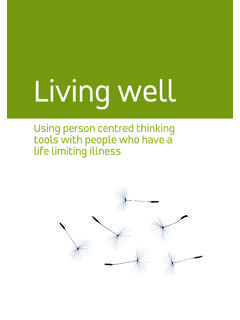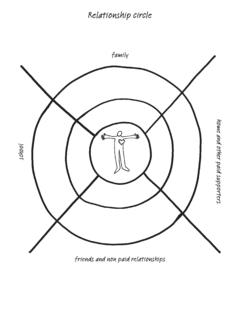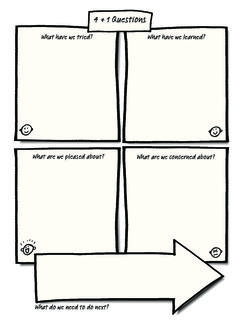Transcription of Working Together for Change - Helen Sanderson …
1 Working Together for ChangeCitizen-led Change in public servicesWorking Together for Change : citizen-led Change in public servicesBy Sam Bennett, Helen Sanderson and Simon StocktonAbout Groundswell PartnershipGroundswell Partnership works with health and social care organisations to transform support and improve people s lives. We are a partnership between Bennett & Stockton Ltd and Helen Sanderson Associates (HSA). We support sustainable Change in organisations through personalisation and community based support and are committed to sharing our learning and spreading innovation across the are currently Working alongside councils, providers, health organisations, the Think Local Act Personal partnership and the Department of Health to support the successful implementation of personalisation in health and social care, including through the use of Working Together for Change .
2 The Working Together for Change methodology was originally designed by HSA and has since been further developed and refined by Groundswell informationWorking Together for Change Groundswell PartnershipAll photos Groundswell PartnershipFirst published credit Groundswell Partnership when using material from this Together for Change is published by Groundswell pp / full colour / illustrated throughoutISBN (digital publication): TBCD esign: .. 4 About Working Together for Change .. 6 Why now? .. 8 The 8 Steps .. 15 Step 1: Prepare .. 21 Step 2: Collect .. 29 Step 3: Theme .. 35 Step 4: Understand .. 43 Step 5: Identify success .. 51 Step 6: Plan .. 59 Step 7: Implement .. 67 Step 8: Learning and review .. 75 What next? .. 82 Working Together for Change | SummaryWorking Together for Change | citizen-led Change in public services4 SummaryThis report is about Working Together for Change (WTfC), a citizen-led approach to Change in public services that is at the heart of what we do.
3 Over the last five years the approach has been developed, tested and refined and is now being used across the country in a variety of settings and internationally as a tool for delivering inclusive strategic Change . We think this is the beginning of something important rather than the end of the road. This report marks our commitment to building on the experiences of partners across the sector to make WTfC a central driver for person-centred commissioning and service development in the UK in the next five will do this by: Establishing a community of interest to support you to share your learning in using WTfC Developing a robust evidence base for the benefits of person-centred Change in public services Sharing our accreditation framework for what good looks like in delivering effective programmes of work through WTfC Working alongside you to break new ground and further improve the approachThis is not the first publication about WTfC.
4 Following several earlier reports by Helen Sanderson Associates, a major Department of Health publication in 2008 shared the results of a project involving four localities where the approach had been tested. This report is a necessary addition for two important reasons. First, the 2008 publication focused solely on using the approach for commissioning, whereas we now know it works equally well as a tool for service and business development for providers. Second, the methodology has continued to evolve and improve over time, particularly to include a greater emphasis on generating solutions and developing robust plans to make them happen. This report is the first full articulation of the eight-stage WTfC process that has been used to great effect from Hartlepool to the Isle of Wight.
5 It explains what the approach is about and why we think it is particularly important now. It describes Working Together for Change | SummaryWorking Together for Change | citizen-led Change in public services5the process in detail, including what we ve learned delivers the best results. It also sets out our plans for a next phase of development and experimentation and what we think the future holds. We hope this report will help maintain momentum where WTfC is already used and create new interest in areas it is yet to reach. Most of all, we hope it helps everybody using the approach or thinking of doing so to continue making a positive difference to people s lives. We are aiming high and we encourage you to do the Together for Change | About Working Together for ChangeWorking Together for Change | citizen-led Change in public services6 About Working Together for ChangeWorking Together for Change is a tried and tested approach to coproducing Change with local people and harnessing the energy from that process for strategic planning, commissioning and service development.
6 It can help to make better use of scarce resources, improve productivity and lead to better outcomes for people by ensuring services provide the things people want and need in ways that make sense to them. It can help statutory agencies understand the impact of their interventions, including the outcomes of the shift to personalisation in health and social care and as part of local plans to deliver against the Think Local Act Personal markers of progress set out in Making it Real. The process goes well beyond consultation towards enabling people with support needs to play a leading role in determining the changes and improvements they want to see. Through testing and refinement over the last five years, people using WTfC have been building a new approach to public service design that empowers citizens to truly lead the uses information, most commonly from person-centred or outcomes focused reviews, to shine a light on what is Working well for people, what is not Working so well and what might need to Change for the future.
7 Person-centred information is collected routinely in some services (though fewer than we would like!) and is becoming more common through the spread of good, person-centred practice within organisations that provide or commission support in health, social care and beyond. It is the information we need to ensure people s support is tailored to their needs and aspirations for the future the very bedrock of personalisation. But until recently, most people have done little beyond planning support for individuals with the person-centred information available. They are missing a trick! The process is scalable, highly adaptable and applicable at different levels of Change . From a social enterprise planning their business or a council reviewing a service, right through to multiple agencies Working to address a crosscutting Working Together for Change | About Working Together for ChangeWorking Together for Change | citizen-led Change in public services7issue, WTfC makes a reality of citizen-led Change .
8 There are compelling reasons for adopting WTfC now and significant benefits to be gained from making the approach part of everyday practice. The next section tells you why, and more specifically why now? Working Together for Change | Why now? Working Together for Change | citizen-led Change in public services8 Why now? There are a number of important reasons why this is the time to Work Together for Change :Making good decisions in challenging timesAt a time of sustained pressure on public finances, organisations cannot afford to ignore the collective knowledge and resources the people they support can bring to meeting the challenges we face. There is real and present danger that public organisations managing the fallout of cuts to their budgets will retrench behind commitments to protect frontline services, while taking a scythe to everything else.
9 When the money needs to go as far as it does now, it becomes even more important to get the important decisions right. While it will be tempting to jettison user engagement along with everything else for which quantifying the benefits is difficult, we believe the opposite should happen. This is the time to work Together for Change so that we use scarce resources on the things people need, want and co-production into practiceCo-production is a concept that has been enthusiastically adopted in the policy agenda in health and social care over the last few years, but the practice has so far lagged well behind the rhetoric. While we think it s probably sensible to leave debates about defining the concept to others, co-production has been described in policy terms as being about people s deep involvement in the design, delivery and evaluation of services.
10 There is increasing evidence for the financial as well as social value of co-production. It seems intuitively correct that designing support with people should lead to more efficient services and better outcomes. Co-production happens through WTfC in two distinct ways. Firstly, by engaging with person-centred information that gives a voice to the people that matter most the people using the service or caring for someone that does. Secondly, by getting the right people in the room Together to understand what the information is telling them, analyze root causes and develop ideas and solutions. This is the time to work Together for Change so we can make a reality of co-production in public services and build a stronger evidence base for the Together for Change | Why now?



